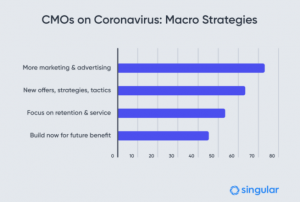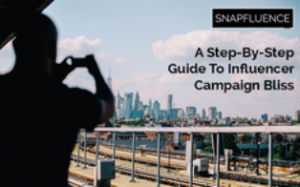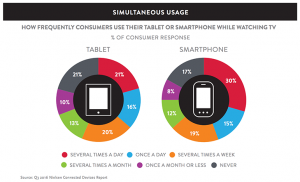How much do bloggers influence your brand image? Can bloggers really be brand advocates? If you are on the brink of this decision, this post will set you straight.
While there are examples of influencers making or breaking brand perceptions, non-celebrity, niche bloggers have much more impact on influencing the buying decision. The latest data on bloggers and their influence on readers, according to the research conducted by Research Now shows that,
So how do you ensure that you find and choose the right advocates to share your brand story?
Step 1: Define your Brand/Product Audience
If you have done any kind of marketing, you must already have this information. If not, then this is as good a time to do it, before you go hunting for bloggers to kick-start your blogging campaign. Defining your audience demographic will give you a clear picture of who your customer is. Are you a men’s fashion or luxury brand? Or does your business cater only to parents of a newborn?
Some of products have a very specific customer definition, while other products have a very wide customer demographic.
You can take a theoretical route to define your audience from scratch and build a couple of buyer personas. Or you can look at your competitors or similar web sites and check out their customer stats to start your audience definition.
For example, if you have a food industry related product, you can use services like Quantcast to find your typical audience profile by looking at complementary web site data.
You can of course look at your Google Analytics data too and any other similar tools to extract information about your website visitors to find out about their interests and profile.
Step 2: Define the Typical Influencer For Your Audience
Once you know who your audience is, it is time to find who their influencers are. You can begin by looking at the Affinity Categories in Google Analytics. The affinity category will show you what are the other areas that your web site visitors frequently follow on the Internet and their likes and dislikes.
Use Alexa.com to find the top web sites in the category your audience likes and check out the profiles of the bloggers in this category. This whole exercise will help you define the blogger persona you want to target in your blogging campaign.
Step 3: Find Bloggers In Your Niche
Depending on your product and market, you may want to target bloggers in specific geographical area. Most bloggers will have the location information in their social media networks. Use these networks to build a list of bloggers in all the markets that you wish to target.
Apart from the geographical location of the blogger, it is equally important to determine the traffic source for the blog. Many bloggers have their blogs hosted on servers located in a different country or talk about services and products across different countries. It is entirely possible that the blog you have chosen gets most of its traffic from a geographical area other than where the blogger currently resides.
The best way to get this information is to request the blogger for stats or ask for their media kit.
Step 4: Match Your Influencer Persona to the Bloggers’
I am sure all this effort sounds too much, but the most important part of a successful blogging campaign is to find the right blogger. There are a number of platforms and blog directories that can reduce the amount of effort you put in until this point.
The most tricky and important part of a successful blogging campaign for your brand is to match the bloggers to the influencer persona that you have defined for your audience. From your blogger shortlist, select the bloggers that are closest to your influencer persona.
Step 5: Know the Blog and Blogger
The one thing that puts off bloggers most is a generic email blast and meeting or talking to a PR contact who doesn’t have a clue about what the blogger does or writes about. Don’t commit this mistake!
Read a few blog posts the blogger has written. Find out if the blogger has written the type of blog posts that you want to include in your blogging campaign. If you want to host Giveaways, check if the blogger has hosted any similar Giveaways before and what was the kind of engagement they were able to generate.
Step 6: Make the Pitch
Myth: Bloggers are passionate writers who don’t want to be paid.
Yes, they are passionate about the topic they write on and have a very strong opinion on the subject. But trying to understand a product or a service and articulating the best and worst about a product or a service takes time. To write it in correct and consistent style, in a readable format without grammatical errors and mistakes, takes a lot of effort.
Let me give you an example of a restaurant menu tasting we did last year – driving to and fro took over two hours, not to mention the cost of fuel. Time spent at the venue was three hours. Ideation, writing, editing, formatting pictures etc. took over 12 hours. And distributing the post over social media is an ongoing process. That is a total of 17 hours!
As far as a serious professional blogger is concerned, these are work hours.
Some might argue that a post can be written in 2-3 hours. But can the output be the same?
The quality of the content, the amount of knowledge shared, and the actual expertise of the blogger will be evident in the blog post.
If the bloggers’ media kit doesn’t specify what they charge for a sponsored post, make a direct inquiry or specify what you are willing to offer the blogger beyond the product sample.
You also need to specify what you expect from the sponsored post and any other activities you want the blogger to engage in on social networks and other channels.
Bloggers Spread Your Brand Message
There are hardly any buyers who do not at least make a cursory search online using search engines or social media to know about your product. In all probability, the buyer who walks into a store has already made up her mind about your product and what to expect when evaluating a product.

So don’t lose this golden opportunity to reach out to bloggers in your niche and put the prospective buyer in a positive frame of mind when she decides to buy what you are selling.
Want to get a head start on building an online brand? Sign up to our newsletter to get a free copy of our book – 76 Ways to Build an Online Brand.
Meanwhile, we would love to hear about your experiences in blogger outreach.
(280)
Report Post









